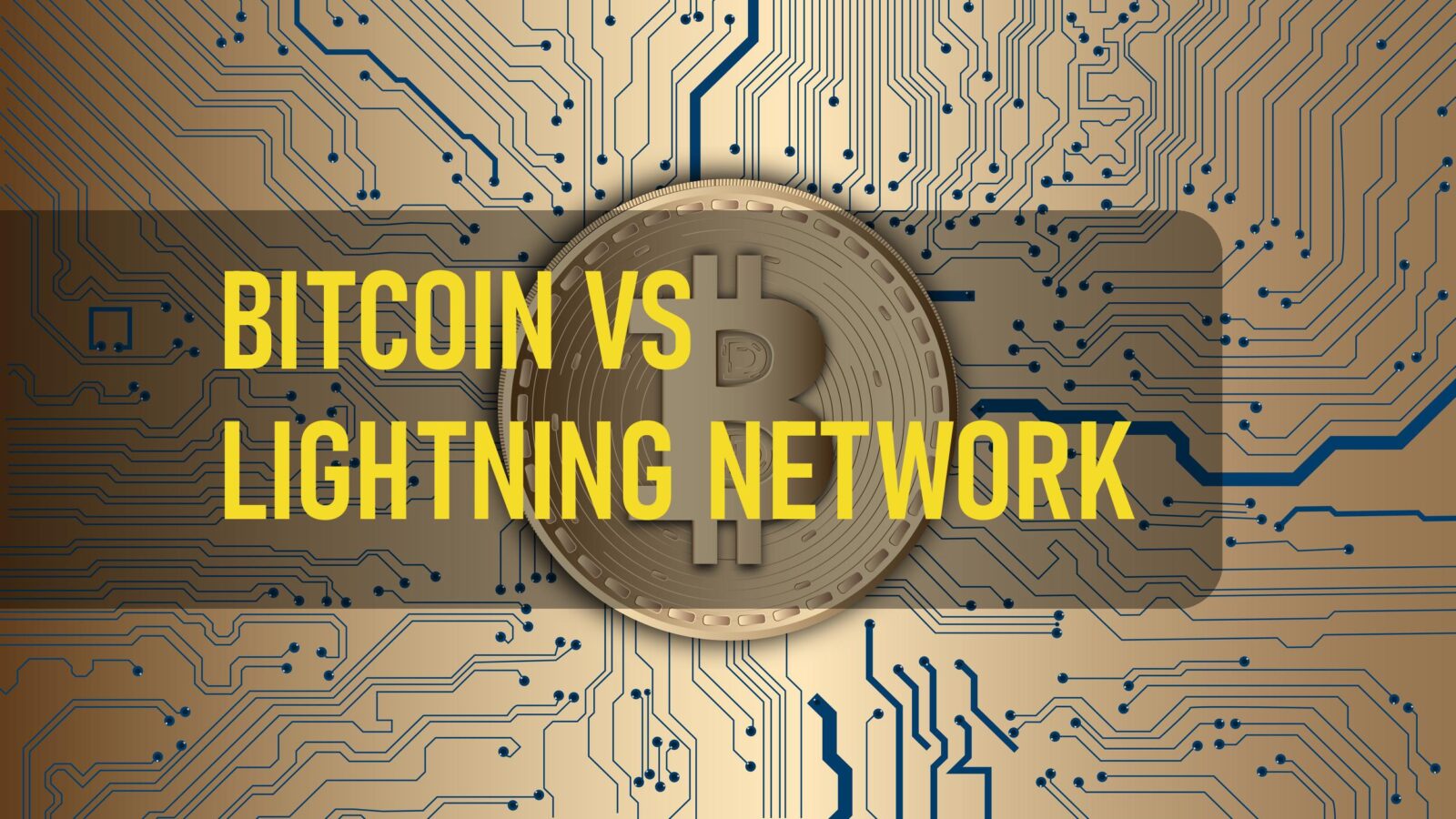Bitcoin is the first and most well-known cryptocurrency, designed to enable peer-to-peer transactions without the need for a central authority. However, as Bitcoin’s popularity has grown, so have its limitations, particularly in terms of transaction speed and scalability. This is where the Lightning Network comes in—a second-layer solution designed to address these issues.
In this article, we’ll compare Bitcoin and the Lightning Network, explore how they work together, and explain the key differences between them.
What is Bitcoin?
Bitcoin, created by Satoshi Nakamoto in 2009, is a decentralized digital currency that operates on a peer-to-peer network using blockchain technology. The Bitcoin network allows users to send and receive funds globally without the need for a trusted intermediary like a bank.
Key Features of Bitcoin:
- Decentralization: Bitcoin transactions are verified by a distributed network of miners using cryptographic principles.
- Security: Bitcoin’s blockchain is secure due to its decentralized nature and the proof-of-work consensus algorithm.
- Limited Supply: There will only ever be 21 million Bitcoins, making it a deflationary currency.
- Transaction Speed: Bitcoin’s block time is 10 minutes, which can result in relatively slow transaction processing, especially during times of high network congestion.
- Fees: Transaction fees can increase significantly during periods of heavy network usage, making microtransactions expensive.
What is the Lightning Network?
The Lightning Network is a second-layer protocol built on top of the Bitcoin blockchain. It was developed to improve Bitcoin’s scalability by enabling faster and cheaper transactions, particularly for everyday use cases like microtransactions. Instead of recording every transaction on the blockchain, the Lightning Network allows users to conduct off-chain transactions that are settled on the Bitcoin network only when necessary.
Key Features of the Lightning Network:
- Off-Chain Transactions: Transactions occur off the Bitcoin blockchain, reducing congestion and speeding up the process.
- Instant Payments: Payments made via the Lightning Network are nearly instantaneous, unlike the typical 10-minute block time of Bitcoin.
- Low Fees: The Lightning Network is designed to facilitate microtransactions with minimal fees, making it ideal for small purchases.
- Scalability: By taking transactions off-chain, the Lightning Network enables Bitcoin to handle many more transactions per second than the base layer allows.
How Bitcoin and the Lightning Network Work Together
Bitcoin and the Lightning Network complement each other by addressing some of the key challenges associated with scaling Bitcoin. Here’s how they interact:
Bitcoin as the Settlement Layer:
Bitcoin remains the base or settlement layer for the cryptocurrency. All final transactions are recorded on the Bitcoin blockchain, providing a secure and immutable record of ownership. This layer is essential for ensuring the overall security of the system, but it’s not efficient for handling small, frequent transactions.
Lightning Network as the Transaction Layer:
The Lightning Network operates as a secondary layer that allows users to create “channels” where they can transact with each other off-chain. These channels are funded using Bitcoin, and users can make an unlimited number of transactions within these channels. Only the final balance (the opening and closing of the channel) is recorded on the Bitcoin blockchain, significantly reducing the load on the network.
Key Differences Between Bitcoin and the Lightning Network
| Feature | Bitcoin | Lightning Network |
|---|---|---|
| Transaction Speed | Slow, with an average block time of 10 minutes | Instantaneous, as transactions are off-chain |
| Transaction Costs | Fees can be high, especially during congestion | Low fees, ideal for microtransactions |
| Scalability | Limited by block size and block time | Highly scalable, allows many transactions per second |
| On-Chain vs. Off-Chain | All transactions are recorded on the blockchain | Transactions happen off-chain until the channel is closed |
| Security | Secure, with transactions validated by the blockchain | Secure as long as the channels are properly managed |
| Ideal Use Cases | Large transactions or storing value | Small, frequent transactions (e.g., micropayments) |
| Complexity | Simple but slow | Requires technical setup and managing payment channels |
1. Transaction Speed
- Bitcoin: On-chain Bitcoin transactions typically take around 10 minutes per block to be confirmed. This delay can be longer during periods of high network usage.
- Lightning Network: Transactions on the Lightning Network are processed almost instantly because they don’t rely on blockchain confirmations until the payment channel is closed.
2. Transaction Costs
- Bitcoin: Bitcoin’s transaction fees vary depending on network congestion. When the network is busy, fees can rise significantly, making it impractical for smaller payments.
- Lightning Network: The Lightning Network is designed to handle small payments with minimal fees, making it ideal for microtransactions that would be expensive on the Bitcoin network.
3. Scalability
- Bitcoin: Bitcoin can handle around 7 transactions per second (TPS), which is insufficient for widespread use, especially for smaller, frequent payments.
- Lightning Network: The Lightning Network significantly increases the number of transactions the Bitcoin network can handle by taking them off-chain, making it far more scalable.
4. Security
- Bitcoin: Bitcoin’s security is based on the proof-of-work consensus algorithm, where miners validate and secure transactions on the blockchain. This makes Bitcoin highly secure but relatively slow.
- Lightning Network: The Lightning Network is secure as long as channels are properly managed. However, it relies on the security of the Bitcoin blockchain to settle final transactions, ensuring the underlying layer remains trustworthy.
5. Use Cases
- Bitcoin: Bitcoin is best suited for large transactions, long-term investment, or high-value transfers where security and decentralization are critical.
- Lightning Network: The Lightning Network excels in enabling fast, low-cost microtransactions, making it ideal for everyday purchases such as buying coffee, tipping online, or micropayments in apps and services.
Benefits of the Lightning Network
- Faster Transactions: Payments are processed almost instantly, which is crucial for everyday use cases where waiting for a Bitcoin block confirmation isn’t practical.
- Lower Fees: Because transactions occur off-chain, fees on the Lightning Network are significantly lower, making it ideal for small transactions.
- Scalability: By moving transactions off the main Bitcoin blockchain, the Lightning Network dramatically increases Bitcoin’s capacity to handle a higher volume of transactions.
- Micropayments: The Lightning Network enables the use of Bitcoin for tiny transactions that would otherwise be impractical due to high fees on the main chain.
Limitations of the Lightning Network
While the Lightning Network offers significant benefits, it also has some limitations:
- Technical Complexity: Setting up and managing Lightning payment channels requires technical knowledge, which can be a barrier for some users.
- Liquidity Issues: In order to make payments, both parties in a Lightning channel must have enough Bitcoin locked in the channel. Lack of liquidity can limit the ability to make payments.
- Network Growth: As the network grows, routing payments through channels could become more complex and less reliable.
Conclusion
Both Bitcoin and the Lightning Network play essential roles in the world of cryptocurrency, but they serve different purposes. Bitcoin, as the base layer, remains the most secure and decentralized way to store value and conduct large transactions. However, its scalability issues make it less practical for small, everyday payments.
The Lightning Network addresses these limitations by providing a faster, cheaper way to conduct microtransactions. It enhances Bitcoin’s usability for day-to-day purchases, making Bitcoin more practical as a global currency for both large and small transactions.
By leveraging both Bitcoin and the Lightning Network, users can enjoy the security and stability of Bitcoin while benefiting from the speed and low cost of the Lightning Network for smaller transactions. Together, they represent a powerful combination that moves Bitcoin closer to being a viable payment solution for everyone.






Leave a Reply